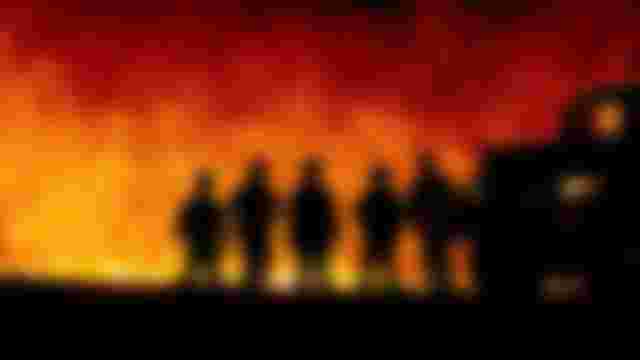Statistics show that the earth gets hit by lightning approximately 100,000 times a day, and up to 20% of this causes forests to get burned and destroyed. Let’s get acquainted with the following research studies that can help us understand wildfires and how to prevent the worst-case scenarios that could sprout from them.

Re-Envisioning Community-Wildfire Relations in the U.S. West as Adaptive Governance
This article was written with the purpose of interpreting the resilience of communities within the Nevada and New Mexico areas. It is also about the process of learning and adaptation with operational flows that are influenced by the scale at which the governing institutions and organizations do their tasks in wildfire incidents. It is also meant to discuss an analytic framework as to how wildfire-related problems are to be dealt with.
Two of the key players for this undertaking were the Caughlin Ranch and Raton which were both embedded in extended periods of handling appropriate solutions and courses of action. Both institutions represented a diversified set of approaches in terms of their community-scale endeavors in protecting the environmental aspects of the area.
By analyzing the data gathered in the Caughlin Ranch experience, a conclusion was drawn which strongly suggests that HOAs can play vital roles in structuring community fire adaptation. But addition that however institutional structures must be done in an incentive-oriented manner. Learning and adaptation among community residents must also be implemented.
The very idea of fire resilience itself often appears to be declared as adequate enough for the residents that thrive within the Nevada and New Mexico areas. Emergency preparations for fire-related incidents may have to be redefined in terms of adaptive governance for the sake of social and ecological standpoints.
The overall analysis of the data presented in the article seems to indicate that, in addition to taking into emphasizing the factors of fire resilience research, the individuals involved should be always vigilant to the institutions, social parties, and organizations at various levels of scalable procedures. This realm of community wildfire resilience is in direct parallelism with many of the fundamental thoughts that pertain to applicable methods that people can put into practice.
Climate Change And Wildfire In California
Southern California has been known for having drier conditions than most of the other areas of the US. With that established fact, the increase of wildfire activity in California which takes place within western forests, in particular, is discussed in this article. A GFDL model of the scenarios which led to reduced fire risks in bustling areas within the region is looked upon in this study. Some parts of the San Bernardino mountains and the fire risks near it are also tackled.

The effects of lower moisture availability on fine fuel production were mentioned. Experts suggest the probability of the effects of temperature outweigh the fuel flammability in dry grass and shrublands at lower elevations. In effect, certain areas of southern California and the western Arizona regions repeatedly experience wildfire incidents.
There are also comparisons across different global climate models that took place on the research included. Such scenarios reveal much more improbable precipitation occurrences compared to other seasons. The results that are showcased in this piece of writing are that the southern California areas are more prone to the effects of the uncertainty of future precipitation processes. Such elements are crucial to assessing the impact of climate change on moisture-limited wildfire regimes.
The authors suggest that anyone who gets to read their article should not focus too much emphasis on the numerical data presented. The reader should not also look into the model's results in isolation. Instead, he or she must assess the direction and degree of change in each scenario relative to the others.
The Unequal Vulnerability Of Communities Of Color To Wildfire
This article looks into how major environmental disasters are causing the loss of trillions of dollars for the last two decades. It starts with the premise that there are over 7,000 major environmental disasters that caused such a huge loss and how they killed more than 1.35 million people worldwide. The study also shows how people that are living in low-income affluent countries tend to suffer more often from environmental disasters compared to those that live somewhere else.
One of the key analysis points written in the article is that cultural, historical, or political experiences greatly vary among issues pertaining to race, culture, and ethnicity. Consequently those factors also hugely affect the methods that are executed for fire management hazards for various communities and social groups.
One notable example stated was an event in Washington, when the U.S. National Guard was deployed to provide emergency assistance for farmworkers who migrated from other places. Some of the government authorities were known to look upon the rescuers as threats instead of being viewed as trusted helpers and messengers.
The study conducted declares that Caucasians and Islanders within Asian/Pacific borders are less likely to live in the census geographical areas that are most prone to wildfire incidents. Asian/Pacific inhabitants also tend to live in neither fire-prone places nor places with a high adaptive deficit. This is because they often settle in metropolitan areas or more affluent suburbs. While wildfires do not pick the kind of people to strike for, the response given to people could greatly vary depending on what kind of race or culture they are known for.

Climate Change, Fire Management, And Ecological Services In The Southwestern US
The objective of this one is to discuss the potential implications of climate change for fire management and in examining the potential effects of climate change and fire incidents that are handled by ecosystem services. In addition, a review of the current understanding in both historical and projected perspectives is also tackled, particularly those that pertain to the relationship between fire and climate in the Southwestern areas of the US.
Substantial increases in fire-related hazards in the area are projected with ever-changing climates. Thus, the natural system management of fire as an ecological process must be highly prioritized. In response to that, there have been substantial research endeavors to determine more methods of restoring fire occurrences as an ecologically beneficial process.
In areas where tree growth is in abundance, which could fuel more wildfire incidents, forest thinning along with prescribed burning is the most effective means of reducing more similar catastrophic events in the future. When done systematically, such a method could lead to more good than harm. Inducing fires seem to be a good method to prevent greater fires, as the study suggests.
Also, reducing the risk of high severity wildfire through forest structure rehabilitation and regularly induce fires based on accurate scientific prescriptions to provide a level of stability to forest carbon stocks – experts affirm this fact. In conclusion, they suggest the idea of moving landscape ‘‘fire sheds’’ from rehabilitation to maintenance. This must include wildland fire use which could result in the emergence of alternative vegetation types in the long run.
Social Vulnerability To Large Wildfires : Landscape And Urban Planning
The main focus of this article is about gaining insights on social-ecological fire-related interactions, and how they can help government agencies in prioritizing fuel management efforts. Also, it tries to point out factors on how to reduce fire risk from government-administered lands to socially vulnerable and underprivileged populations.
To efficiently conduct such an undertaking, assessments have to be made which are valuable to socially vulnerable communities in terms of fire hazards and risks. The study included in this writing is meant for quantifying the exposure of those communities to wildfires originating on adjacent land tenures.
In the study, it is indicated that within the areas of most fire-prone countries, the responsibility for managing wildfires is often bestowed upon government agencies. People who are in charge of the sectors in them are tasked to manage and execute huge portions of the landmass. Analyzing the latter would lead to the quantifying of the dangers involved. It could be the best means of informing those who are obliged to make executive decisions on the best courses of action to take.
Actions that pertain to recognizing the sources of wildfire hazards to fire-prone communities at a landscape level are crucial to any social group. In doing so, the data gathered can inform future urban planning to avoid infrastructure developments on fire-prone landscapes, especially in places where the framework of the area appears to be risky after assessing them.
As a conclusion, it can be understood that identifying multiple adjoining communities that are affected by the same hazards throughout the generations could greatly help the government, as well as the people that thrive within them. If the people that comprise the areas would work in collaboration with each other, the governing authorities would find them easier to handle. In effect, the most appropriate responses and courses of action can then be issued and executed.
The Facade of Safety: History, Wildfire, and Social Consequence
This article is about the increased threat of wildfire in Southern California and how it has terrorized life and property in recent years. To combat the problem efficiently, a method called Shelter-in-Place (SIP) is highlighted and discussed.

This writing also examines the seemingly inappropriate ways in which the practices that revolved around it have been sold, deployed, and discussed in Southern California. Within the discussion, it can be noticed that spending on fire safety matters is a financial undertaking that is truly worth it. This means that spending time and resources on the prevention of wildfires is something that any state or municipality must highly spend on.
In implementing the SIP methods, materials that are deemed invulnerable to fire are also utilized, but it can be a self-defeating kind of endeavor. This is because of the knowledge that fire-resistant is not the same as fireproof. Furthermore, the occurrence of fire incidents is not only harmful due to the extreme heat it causes, but also for the gas suffocation it may inflict on people.
As to the efficacy of SIP, it is noted that it does reduce the risk of fire, but it is not meant to be regarded as a perfect solution. By implementing this new technology, private sectors have been known to exploit it because they can sell new houses, and by obtaining private firefighting contracts. Such scenarios can lead to financial corruption eventually. It is the main reason why SIP must be looked upon closely by the government.




Luckily Philippines are not prone to lightnings that can cause wildfires.. Mostly dito sa Pinas mga pasaway na tao ang nagsisimula ng sunog sa mga kabundukan.Napagtritripan or dinaman kaya tataniman . And it's just sad , there are various machinery to be use to get rid of all the grass ,so why burn it.hayst. This one is interesting one..